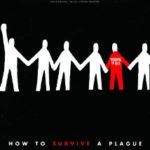BRAC: microcredit and solidarity lending in Bangaldesh
Using social capital to lend money in micro-finance is something I have seen the practice of self-help group banking in India. However, the BRAC Rural Development Programme, its methodology and its impact as a ‘sustainable’, ‘capacity building’ development model are really interesting, especially in light of the aid gift we discussed in week 1 and this week’s topic of money and markets.
BRAC was started by Sir Fazlé Hasan Abed as a small-scale relief and rehabilitation project, and has since grown with projects across 11 countries in Asia, Africa and the Caribbean, presumed the world’s largest NGO. BRAC’s anti-poverty approach targets women and girls and helps enable them by finding practical ways to increase their access to resources and support their entrepreneurship potential. BRAC has been incredibly successful both as an NGO, but also filled the investment gap in the small enterprise sector and now generates around 70% of its own income through a huge array of Brac-branded enterprises (figures from the guardian article linked below)
Though BRAC has more than a few critics regarding it’s power in Bangladesh, its financial success, it’s decision to go ‘global’ by helping other developing nations, and evidence that microcredit is causing over-indebtedness for many Bangladeshis (Aminur Rahman in Livelihood and Microfinance: Anthropological And Sociological Perspectives on Savings and Debt)
It would be interesting to explore in detail the long-term economic impact of micro-finance on the poorest of the poor.
What is interesting about BRAC is that it flips the traditional North – South NGO relationship that we discussed in week 1.
Susan Davis the CEO of BRAC USA delivered a talk at the Oxford Business Guild recently,somewhat similar aspects of her talk in the link below – https://www.youtube.com/watch?v=Rn04-VUTDVk
http://america.aljazeera.com/opinions/2015/3/maybe-the-anti-vaxers-have-a-point.html
Divya Candade
Contributed by DivyaCandade on 26/01/2015






